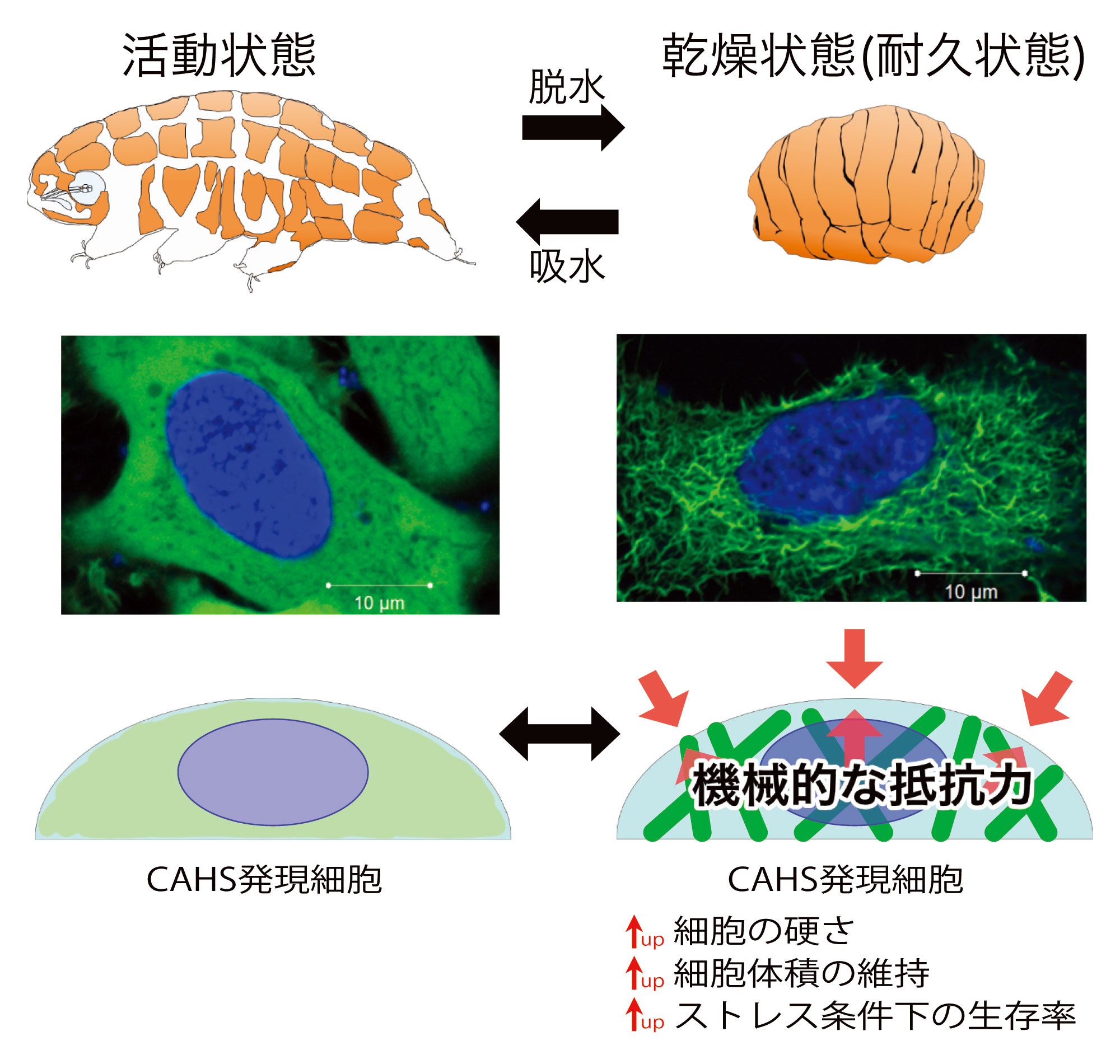Disclaimer: machine translated by DeepL which may contain errors.
Create a web of fibers to protect cells from dehydration stress
Takekazu Kunieda, Associate Professor, Department of Biological Sciences

![]()
Tardigrades lose water as the external environment dries out and eventually reach a state called anhydrobiosis, in which they are almost completely dehydrated. In this anhydrobiosis state, the tardigrade is basically in a state of suspended vital activity due to the absence of water as a site for metabolic reactions, and can be regarded as a mere mass of motionless matter. What is different from mere matter is that when water is added, life activity can be resumed in a few minutes. This means that tardigrades can move freely between "dynamic life-like state" and "static matter-like state," providing an extremely rare opportunity to treat "essentially dynamic life" as "static matter. In addition, during the period of anhydrobiosis, the time of life stands still, and death occurs when the sum of the time spent in the active state reaches the end of the life span, regardless of the length of the anhydrobiosis period. Dehydration tolerance is not only an adaptation to the loss of water, but also a highly suggestive phenomenon regarding life itself and its temporal progression.
However, how they contribute to dehydration tolerance has remained a mystery. In this study, we searched for tardigrades that aggregate during dehydration in order to find new resistance proteins, and unexpectedly rediscovered a group of resistance proteins called Cars (CAHS), which we had previously identified. When the Cars proteins were introduced into cultured human cells, they diffused uniformly into the cells, but when the cells were subjected to hyperosmotic stress to induce gradual dehydration, the Cars proteins rapidly assembled into a network-like structure consisting of many fibers (Figure). The cells in which such a fiber network was formed became stiffer than normal cells and showed increased resistance to the force that causes cell contraction. Cells exposed to hyperosmotic stress showed a decrease in volume and survival rate due to the gradual deprivation of intracellular water, whereas cells transfected with Cars protein showed a suppression of volume loss and improved cell survival. The formation of the fiber network was reversible and dispersed to its original uniform state when the stress was removed, indicating that the Cars protein is normally floating around inside the cell and only forms a fiber network when necessary to physically strengthen the cell and protect it from stress. This is a novel mechanism that contributes to tolerance by physically reinforcing cells and protecting them from stress only when necessary. Further analysis of the mechanism of dehydration tolerance in tardigrades is expected to make it possible in the future to dry and preserve any cell at any time.
This work was published in A. Tanaka et al. PLOS Biology 20, e3001780 (2022).
Note: Proteins usually perform their functions by adopting a specific structure, but a group of proteins have been found that function without a specific structure and are called nonstructural proteins.
(Press release, September 7, 2022)
Published in Faculty of Science News, January 2023
The Forefront of Research Students>



